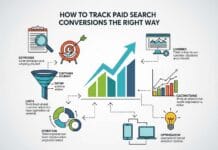
In a digital economy driven by speed, trust, and personalization, not all financial platforms are created equal. The ones that stand out are built with the user at the center, designed to be intuitive, secure, and responsive to evolving needs. But being user-first isn’t enough anymore.
To truly lead, a financial platform must also be future-ready, capable of adapting to regulatory shifts, tech advancements, and changing customer expectations. Whether it’s through seamless mobile access, AI-powered insights, or open banking integration, today’s platforms must blend innovation with usability.
So, what really sets a platform apart in this competitive landscape? Let’s explore the key traits that define a financial platform that’s both user-first and ready for tomorrow.
The Foundation of User-First Trading Experiences
The best forex platform starts with fundamentals that prioritize traders needs before flashy features. When examining online forex solutions, two core elements stand out as non-negotiable.
A truly exceptional forex trading broker understands that without these foundational elements, even the most feature-rich platform will fail to deliver consistent results for traders. The combination of thoughtful design and robust protection creates an environment where traders can focus on strategy rather than fighting with complicated tools.
Intuitive Interface Design That Reduces Mental Load
An interface that makes sense isn’t just about good looks, it’s about reducing the mental effort required to trade effectively. The best platforms organize information in ways that support quick decision-making during critical market moments. They feature customizable layouts that adapt to different trading styles, whether you’re a technical analyst or a news-driven trader.
Security That Doesn’t Get in Your Way
Security shouldn’t come at the expense of usability. User-first platforms implement robust protection that works quietly in the background without creating friction. They balance strong safeguards with smooth authentication processes, giving traders peace of mind without constant interruptions.
Technology Infrastructure That Enables Low-Cost Trading
While user-friendly design creates the surface experience, it’s the underlying technology that makes low-cost forex trading possible without compromising performance or reliability. These technological advantages directly influence your trading costs and experience quality, creating the foundation for consistently reliable performance. From optimized server architecture to real-time data analytics, today’s trading platforms are built with efficiency in mind.
By reducing latency, automating processes, and scaling infrastructure with demand, these platforms minimize the costs traditionally associated with trade execution. For the end user, this means not just affordability, but speed, precision, and confidence in every trade.
Cloud-Based Architecture Benefits
Modern forex platforms leverage cloud infrastructure to deliver significant advantages for traders. During high-volatility periods, cloud-based systems can scale instantly to maintain performance when traditional systems might falter. This architecture significantly reduces operational costs, with savings often passed to traders through lower fees and tighter spreads.
Additionally, cloud hosting enhances data redundancy and security, minimizing the risk of service outages or data loss. Traders benefit from 24/7 uptime, faster data processing, and improved access across devices. With cloud architecture, even retail traders gain access to enterprise-grade performance, leveling the playing field in global markets.
API Ecosystems for Connected Trading
The most forward-thinking platforms offer robust API capabilities that connect seamlessly with third-party investment tools for forex. This integration enables data to flow between different services, allowing traders to build customized workflows that match their unique strategies and needs.
APIs empower traders to automate trades, analyze historical data, apply algorithmic models, or integrate news and sentiment feeds directly into their trading interface. For institutions and advanced individual traders, this connectivity drives efficiency, consistency, and real-time decision-making.
As the trading landscape becomes more interconnected, APIs become essential tools in creating a flexible, personalized, and competitive trading environment.
Advanced Features That Enhance Decision-Making
With solid technology foundations in place, truly user-first platforms differentiate themselves through tools that transform data into actionable insights. These features empower traders to make decisions based on comprehensive information rather than gut feelings or incomplete analysis.
Real-Time Analysis and Market Intelligence
Leading platforms provide sophisticated forex market analysis tools that visualize complex data in easily digestible formats. They offer customizable dashboards that highlight the specific metrics most relevant to your trading strategy. Some platforms now incorporate predictive analytics that identify potential market movements before they become obvious to the average trader.
Mobile-First Trading Capabilities
Today’s traders don’t sit at desks all day. User-first platforms recognize this reality with powerful mobile experiences that don’t feel like afterthoughts. They implement thoughtful push notification strategies that alert you to critical opportunities without overwhelming you with alerts.
The best mobile experiences include gesture controls optimized for quick trading actions and offline capabilities for reviewing analysis when connectivity isn’t available.
Data-Driven Personalization for Better Trading
The future of forex trading lies in platforms that adapt to individual trader profiles and behaviors, creating experiences that feel custom-built for each user. This level of personalization represents the cutting edge of what’s possible in modern trading platforms.
AI-Powered Trading Assistance
Forward-thinking platforms now incorporate machine learning to identify patterns that might escape human analysis. They analyze market sentiment across news sources and social media to provide additional context to technical indicators. Some even offer automated strategy suggestions based on your trading history and risk tolerance.
Personal Finance Integration
User-first platforms increasingly provide holistic views that place trading activities within the context of broader financial goals. They offer goal-setting features linked directly to trading strategies, helping traders understand how individual positions contribute to long-term objectives. Advanced platforms even include portfolio diversification recommendations to help maintain balanced exposure across different markets.
The Future of Trading Is User-Centered
The transition to truly user-first platforms represents a fundamental shift in how financial technology serves traders. The most successful forex platforms combine intuitive design with powerful technology, all while keeping costs reasonable through efficient infrastructure.
As markets grow more complex, the distinction between platforms that merely offer features and those that truly empower users will only widen. By prioritizing platforms that put your needs at the center, you’ll gain more than just trading tools, you’ll gain partners in your financial journey that evolve with your growing expertise.
Questions About User-First Trading Platforms
What makes a forex platform truly “user-first”?
A genuinely user-first platform prioritizes intuitive design, transparent fee structures, robust but unobtrusive security, and personalized tools that adapt to your trading style, all while maintaining reliable performance during high-volatility periods.
How to evaluate the real-time data quality on a forex platform?
Compare quote refresh rates, check for price gaps during major announcements, and assess how quickly economic data releases appear in news feeds. Quality platforms maintain consistent data streams even during market-moving events.
Should beginners prioritize different platform features than experienced traders?
Yes, beginners should focus on educational resources, demo accounts with realistic conditions, and simplified interfaces. Advanced traders typically need more customization options, API access, and sophisticated analysis tools tailored to specific strategies.





